Lesson 4
A New Age
|
|
|
|
A blue-gray light now cast its glow in
South Dakota living rooms. The light came from a new invention. It
was television, or TV. It brought black-and-white moving pictures of
the world onto a small screen. Americans soon owned millions of
television sets. TV stations sprang up all over the country. There
was one in Sioux Falls. Mitchell and Rapid City soon had one, too.
|
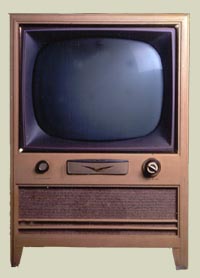
Photo courtesy of South Dakota State
Historical Society
|
|
|
|
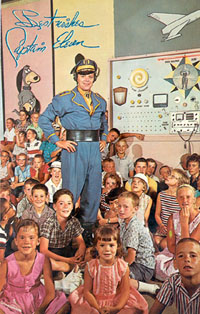
Photo courtesy of South Dakota State
Historical Society
|
TV was
mesmerizing.
Families came together to watch it. They saw "The Ed Sullivan
Show" or "I Love Lucy." Local stations set up their
own programs. In South Dakota, "Captain 11" was a
hit. Families did not want to miss their favorite shows. Companies
began to make frozen TV dinners and TV trays. People could eat in
front of their TV sets. Before long, TV programs could be seen
"in living color."
|
|
|
At the same time, the United States
sent troops into South Vietnam. They hoped to stop the Communists
from taking over that country. The Cold War had heated up once
again. This was called the Vietnam War. It was the longest war in
United States history. Thousands of soldiers died. Two hundred were
from South Dakota. Many people began to think the war was wrong.
This became a big issue in the elections.
One
United States senator from South Dakota was for the war in
Vietnam. His name was Karl Mundt. The other
senator was against the war. His name was George
McGovern. The Democratic party picked McGovern to run for
president of the United States. The year was 1972. He lost the
election, but his point of view won support.
|
|
|
|
The war was only one of the things
that troubled people at this time. Many Americans thought there were
problems with the Constitution. Did it
guarantee
the rights of women and
minorities,
they asked? Did these groups have equal
access
to schools and jobs? Could African Americans and American Indians
get good housing? Could they get good health care? If not, what
could be done? It was an era of
social
change.
|
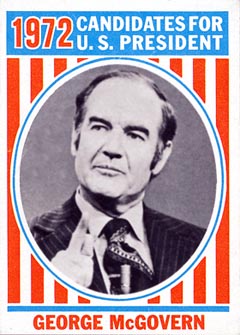
Photo courtesy of South Dakota State
Historical Society
|
|
|
|
|
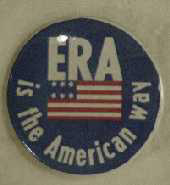
Photo courtesy of South Dakota State
Historical Society
|
Feminists
came to the state capitol to support the Equal Rights Amendment.
Others met there to oppose it. Some American Indians started a new
group. They called it the American Indian Movement (AIM). Members
wanted better laws for American Indians. They took over the town of
Wounded Knee. Gunfire broke out between them and federal marshals.
Several people died. This was known as Wounded Knee II. (You
read about the first Wounded Knee in Unit 5). The issues of civil
rights are still with us today, but some changes were made. New laws
gave more chances to women and minorities. Soon the Cold War was
over, too. The Soviet Union was no more.
|
|
|
|
|
During this time, South Dakota colleges
began to teach a new subject. It was called computer science. Not
many people owned computers. Computers were big and they cost a
great deal of money. They also held much promise for the state.
Senator Mundt and Congressman Benjamin Reifel worked to bring a
huge computer center here. It was called the Eros Data Center.
It is still near Sioux Falls today.
|
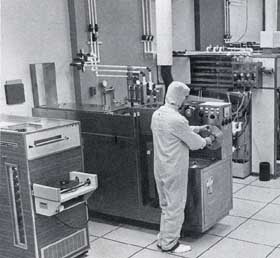
Photo from United States Department of
Interior brochure (1978)
|
|
|
|
Computers became smaller. They were
easier to use. Businesses and governments bought them. So did
schools and families. Computers were soon linked to each other. This
is called the Internet. At first, only a few were linked. People
could send e-mail messages, but it took hours to get from one
computer to another. Today, this has changed. The Internet is now
a Worldwide Web. It connects people all over the world. A classroom
like yours can talk instantly with classrooms in other countries.
Our history is suddenly their history—and theirs is ours.
Conclusion
At the dawn of a new
millennium, South Dakota is still
changing. The Homestake Mining Company has closed. A Mexican company
now runs what was once the state cement plant. South Dakotans still
move from small towns to bigger ones.
The population is growing again.
There are more people than ever before. Now 882,235 people live in
our state. Every one of us makes history every day.
Who can say what is ahead?
By knowing our past and sharing our
common heritage, we can make history together.
Right here in South
Dakota.
You and me.
|
|
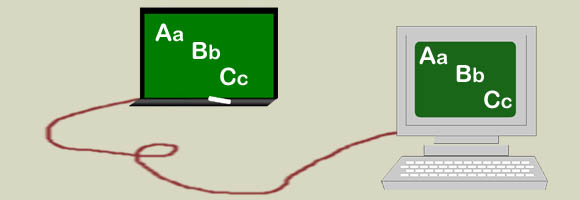
|
|
|
| Vocabulary |
|
| access (n.), chance or ability to use something
feminists (n.), people who believe in equal rights for
women and men
guarantee (v.), to promise or assure something
mesmerizing (adj.), capturing all your attention
|
millennium (n.), a period of one thousand years
minorities (n.), smaller groups differing in race,
religion, or background from a larger group
social (adj.), relating to how people live and work
in society
|
|
|